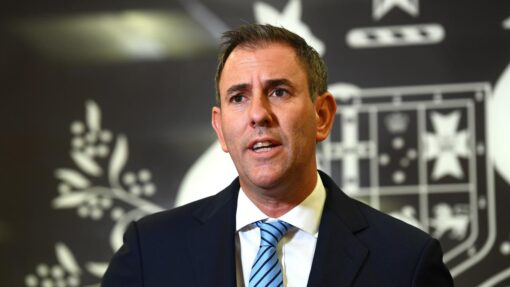Life after death for sale in Aussie town
Tracey Ferrier |

In a nondescript warehouse in country NSW, the dead will soon be stored, head down, feet up, awaiting resurrection.
The building, in the small town of Holbrook, offers no outward clue it could one day house dozens of bodies – people who’ve paid to be preserved in the hope of scientific breakthroughs that could bring them back to life.
The business of whole-body cryonic suspension is not cheap but is about to be offered in Australia for the first time under a strict policy of no guarantees and no refunds.
Those conditions seem prudent given the horrifying events that unfolded in California in 1979, when cryonics pioneer Bob Nelson quietly walked away from a facility less than 10 years after he opened it.
The former TV repairman ran out of cash to pay for deliveries of liquid nitrogen and nine bodies that should have been preserved indefinitely were left to rot and liquefy. Nelson later penned a memoir titled, Freezing People is (Not) Easy.
Retired marketing specialist Peter Tsolakides is chairman and one of the founders and directors of Southern Cryonics, the non-profit company behind the Holbrook facility.
He says much has changed the Nelson debacle, pointing to US organisation Alcor, which turns 50 this year. The Arizona-based “life extension foundation” says it has 191 “patients” in its care and a membership base of about 1500.
The NSW site is small by comparison. Stage one can only take 40 bodies but with the addition of more warehouses that could swell to 600 in the distant future.
Mr Tsolakides says Southern Cryonics has 34 founding members who’ve each made up-front, cash payments of between $50,000 and $70,000 for a second shot at life. The founder is among them.
Once the site is operational – a milestone said to be tantalisingly close – the company will start taking newcomers but they’ll have to pay $150,000 to be indefinitely stored in liquid nitrogen.
It’s a head-down, feet-up arrangement, a safeguard to maximise the chances of brain preservation if there’s ever a leak from the double-walled containers that can each accommodate four bodies.
Mr Tsolakides agrees it’s a significant amount of money but as Southern Cryonics says on its website, people should remember they are “buying an experimental lifesaving treatment, not an expensive funeral”.
Southern Cryonics tells newcomers to fund their suspensions by taking out life insurance policies naming the company as the beneficiary, mirroring the funding model used by Alcor in the US.
Given what happened at the Nelson vault, financial longevity is of paramount concern.
Mr Tsolakides says most of the fees people pay will go into low-risk investments so there’s enough cash to keep Southern Cryonics alive and the bodies preserved “almost forever”.
He says pooled investment funds will be managed independently of Southern Cryonics, although those arrangements haven’t been finalised because nobody in the program has died yet.
In the event things don’t go to plan, Southern Cryonics has offered assurances to NSW health authorities and the local council, which both consider the Holbrook site to be a burial facility.
“One is, and this is not our preferred case, to respectfully bury the people who are in there,” Mr Tsolakides says.
“That’s not great but that’s what we would do and … that’s been accepted.”
AAP has been unable to speak to any of the people who have already paid for their suspensions or to verify the claims made about the services being offered to them. Mr Tsolakides says those involved are typically very private individuals.
Max More is a philosopher and futurist who joined Alcor in 1986, aged 22. At the time, the organisation had fewer than 70 members.
He believes Mr Tsolakides is being a little pessimistic when he talks of having to securely store people for about 250 years.
His view is that it could be as little as 100 years before revival is possible “but nobody really knows”.
Sceptics say the idea humans can be successfully preserved and then reanimated with their memories and sense of self intact is pie-in-the-sky stuff.
RMIT cryobiology expert Gary Bryant recently told Cosmos magazine the concept of successfully preserving a human body, with all of its cellular complexity, was “basically science fiction” as researchers were currently unable to cryogenically preserve even a simple organ.
Mr More accepts many people dismiss cryonics as fanciful or believe it’s a scam but he says future technological advances are unknowable.
“It’s funny when people say, ‘oh we’re a scam, a get-rich-quick organisation’. It’s hilarious because it’s the most difficult thing to sell people.
“They have to think about their own death, they have to make all these arrangements, there’s all this documentation and then we tell people all the reasons why it may not work. So it’s the hardest thing to get people to sign off.”
He says supporters accept that people’s understanding of death is not clear-cut.
“Before about 1960, if you stopped breathing and your heart stopped beating we just said ‘well, they’re dead’ and threw up our hands. Today we do CPR and defibrillation and often recover them.
“In cryonics we tend to have the view that you are not truly dead in terms of it being irreversible until the structure of your brain has been so badly damaged that there’s no way – even in principle – that any technology could repair it.
“Otherwise you are not really dead. You are in an uncertain state … a kind of in-between.”
AAP


